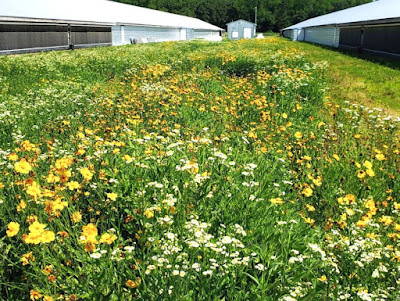December 9, 2019 – Holly Porter, executive director of Delmarva Poultry Industry, Inc., made the following statement today regarding recent North Carolina State University research attempting to model ammonia emissions on Maryland’s Eastern Shore:
Maryland’s family farmers raising chickens have played a key role in achieving the state’s well-documented progress in reducing nutrients in the Chesapeake Bay and improving water quality. Maryland has met its water-quality goals for reduced phosphorus seven years ahead of the 2025 deadline, in part because of reduced phosphorus loads from agriculture and despite rising phosphorus loads from cities and suburbs. Farmers in the watershed have reduced their nitrogen contribution to the Bay by 24 percent since the 1980s, even while nitrogen runoff from developed areas has risen.
Recent research supported by the Chesapeake Bay Foundation and performed by North Carolina State University modeled ammonia emissions from a hypothetical chicken industry that bears little resemblance to Maryland’s actual community of chicken farmers. The research assumes farmers uses no litter amendments — particles spread on chicken house litter that soak up ammonia from the air. In reality, the use of litter amendments is widespread on U.S. chicken farms because they reduce ammonia, producing a better environment for chickens and farmers. The research also assumes that every Maryland chicken house contains birds 365 days a year, without pause. In reality, all chicken farmers have “layout” periods between flocks several times a year, when the houses are empty so farmers can perform maintenance and upgrades. The model also doesn’t account for any forested land on Delmarva, assuming all of Maryland’s Eastern Shore is farmland. In reality, forests absorb ammonia, as do vegetative buffers on chicken farms.
As the researchers acknowledged in a published paper, these assumptions were “not a realistic approach” and caused their model to overestimate ammonia levels. The researchers did not approach DPI or our members to get data about the use of litter amendments or the frequency of layouts before publishing conclusions based on their incomplete model. We look forward to working with the Chesapeake Bay Foundation to correct those flawed assumptions in the model.
Even with these flawed assumptions in place, the model’s predicted ammonia levels on Delmarva fell far short of concentrations noticeable by people, or concentrations with any effect on human health. When the researchers performed limited air monitoring on Delmarva, they recorded the highest levels of ammonia in a city and at a waterfront point close to southern Maryland – not in rural, farmed areas. That’s no surprise to Delmarva family farmers raising chicken who live and work on their farms, right alongside their flocks – after all, they care deeply about air quality, since they breathe the same air their neighbors do.
 |
| A pollinator-friendly vegetative buffer planted between two chicken houses. |



8 comments:
The Chesapeake Bay Foundation......another damn the sky is falling group! Closely related to PETA, tree huggers! Send them up to Conowingo Dam and clean that mess up and see immediate results in the Bay! Bunch of basement dwellers.
assume, model, assume some more, total bs!
Correct about the Chesapeake Bay Foundation - money grabbers without significant results.
Time to ban the chickens and the AR15s too
11:42.
Time to ban idiots like you
Time to defund the Chesapeake Bay foundation
People eating all that dead chicken are slowly being killed by said chickens.
I bet most of you have never been in a chicken plant. That isn't necessarily a bad thing. But you might be surprised by the type that works in one. Most are one step up from animals themselves.
And the rest of them you wouldn't want inside your home.
Are you referring to a plant where chickens are manufactured or a plant where chickens are processed ?
Post a Comment